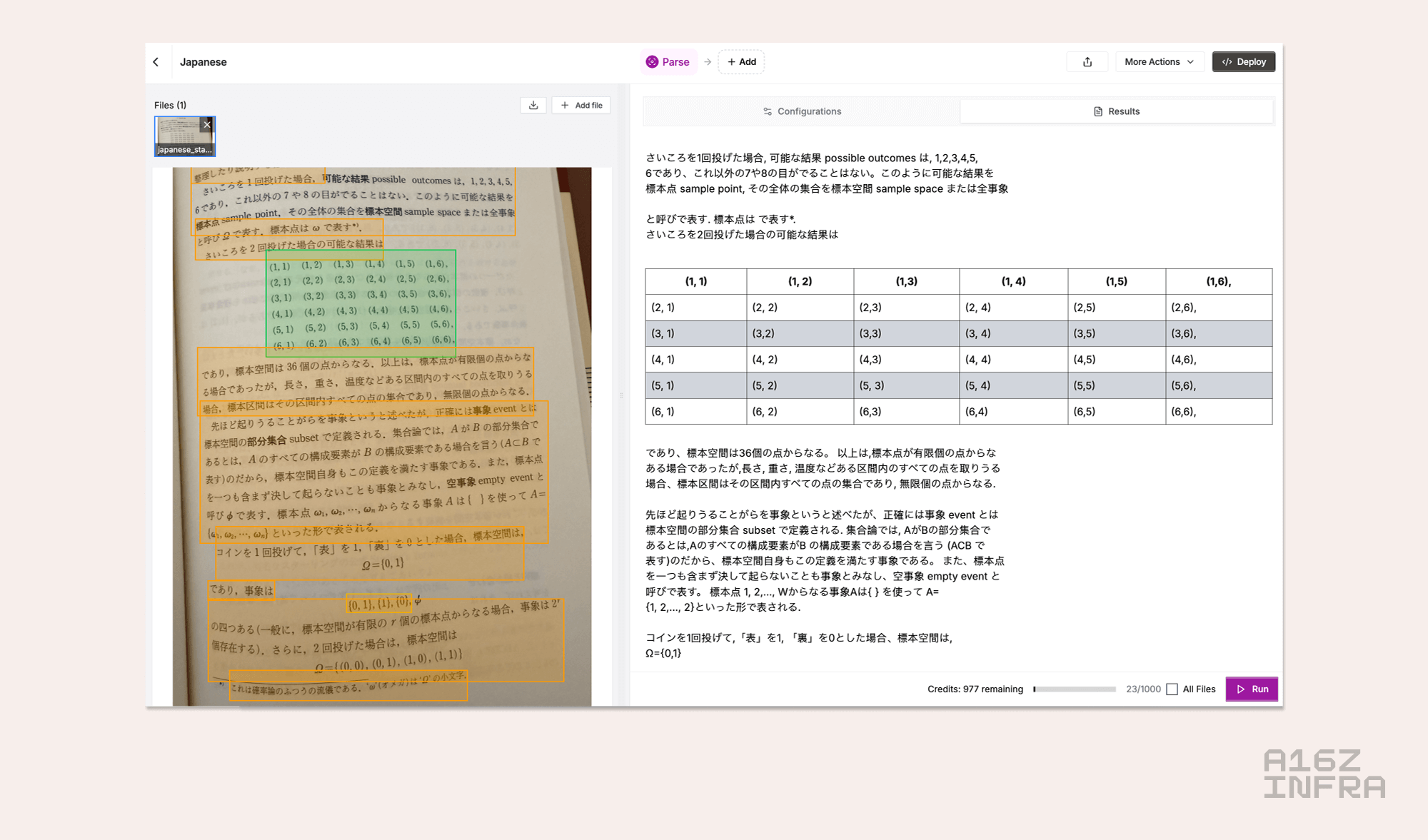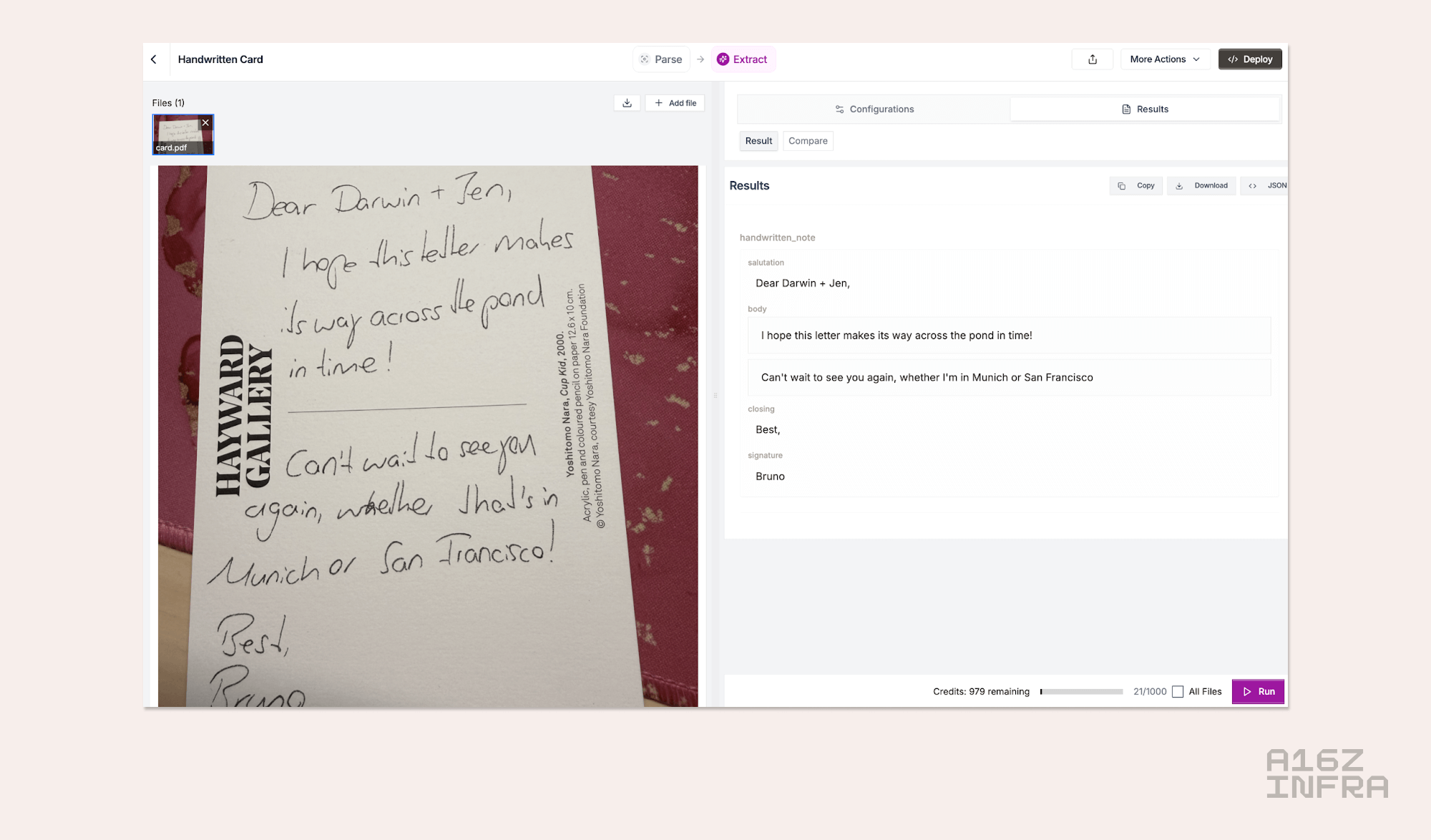Every enterprise runs on documents. Contracts memorialize agreements. Medical forms encode patient histories. Financial filings capture the details of corporate health. These documents are where institutional memory lives. For AI to be useful for enterprise, it needs to be able to interact with the endless documents that most established companies produce every day.
Despite the remarkable progress we’ve seen in AI over the last few years, document processing remains a critical bottleneck. Traditional optical character recognition (OCR) treats documents as static inputs, resulting in slow, inaccurate, and rigid pipelines that break under real-world complexity.
Reducto exists to fix this. Rather than simply digitizing text, Reducto’s system interprets documents – reading layout, format, and structure as cues to meaning. It dynamically selects the optimal models to achieve the highest accuracy for each document type. The system can recognize a redline in a legal contract, parse handwritten dosages in prescriptions, or extract tables from dense financial filings, and more. It excels under complex document types and at-scale processing needs.
But accuracy and speed is just the foundation. Reducto provides granular control: it can extract only handwritten portions, summarize specific tables, or parse complex multilingual technical documents – all through simple prompts. Whether it’s a Japanese algebra textbook or handwritten notes, Reducto handles it all.
If I want to parse a card and extract only the handwritten portion:
Or if I want to parse a table from a complex Japanese algebra textbook:
 That same foundation powers Reducto’s Edit, one of the industry’s first document-editing APIs. Where traditional tools stop at extraction, Edit allows developers to programmatically revise the source itself – accepting a clause, fixing a figure, or reconciling an annotation. For technical teams building AI-driven workflows, this means the pipeline no longer ends with reading a document, it becomes a read-write operating system.
That same foundation powers Reducto’s Edit, one of the industry’s first document-editing APIs. Where traditional tools stop at extraction, Edit allows developers to programmatically revise the source itself – accepting a clause, fixing a figure, or reconciling an annotation. For technical teams building AI-driven workflows, this means the pipeline no longer ends with reading a document, it becomes a read-write operating system.
By operationalizing frontier vision-language models, Reducto has enabled use cases that were historically too difficult to automate:
- Parsing multilingual financial research documents to create real-time trading signals
- Extracting scanned invoices automatically with no human-in-the-loop review
- Filling in long security questionnaires with varying formats in real time
- Transcribing handwritten text from faxed prior authorization documents
Adit and Raunak found this problem while working on building long-term memory for LLMs. After spending a weekend hacking on a document segmentation tool, they realized that as common as OCR models are, turning unstructured documents into structured data is still an unsolved problem. As agents and agentic workflows come to redefine the workplace, the demand for structured document processing is growing rapidly. True to the company’s name, Adit and Raunak want Reducto to be the magic spell that “turns large solid objects into pieces” – in this case, turning long-form documents into small chunks through a simple API.
Reducto’s vision is bold: a world where every document – past or present – becomes a live, structured, editable digital object that AI can reason over safely and reliably. We’re proud to back Adit Abraham, Raunak Chowdhuri, and the Reducto team as they build the document intelligence layer that underpins the next generation of enterprise AI.





